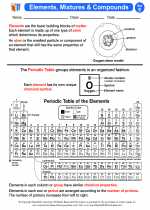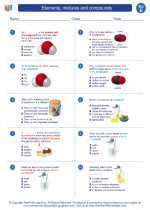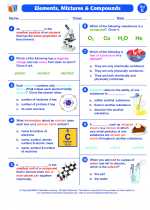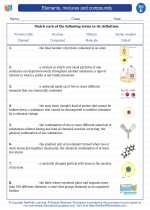What is Vascular Tissue?
Vascular tissue is a complex network of specialized cells found in higher plants, responsible for the transport of water, nutrients, and organic compounds throughout the plant. It is composed of two main types of tissues: xylem and phloem.Xylem
Xylem is the tissue responsible for transporting water and minerals from the roots to the rest of the plant. It is composed of several cell types, including tracheids, vessel elements, fibers, and parenchyma cells. The main function of xylem is to provide structural support and to conduct water and minerals through the plant.Phloem
Phloem is the tissue responsible for transporting nutrients, such as sugars, from the leaves to other parts of the plant. It is composed of sieve tube elements, companion cells, fibers, and parenchyma cells. The main function of phloem is to transport organic compounds produced through photosynthesis to support the plant's growth and development.Vascular Bundles
In most plants, xylem and phloem are arranged together in vascular bundles. These bundles are found throughout the plant, providing a continuous network for the transport of fluids and nutrients. Vascular bundles can be found in the stems, roots, and leaves of the plant.Functions of Vascular Tissue
- Transport of water, minerals, and nutrients throughout the plant
- Support and structure for the plant
- Healing and defense mechanisms in response to injuries or pathogens
Importance of Vascular Tissue
Vascular tissue is essential for the survival and growth of higher plants. Without the efficient transport of water, nutrients, and organic compounds, plants would not be able to carry out essential processes such as photosynthesis, growth, and reproduction.Study Tips
- Understand the different cell types present in xylem and phloem, and their specific functions.
- Visualize the flow of water and nutrients through the plant using diagrams and flowcharts.
- Compare the functions of xylem and phloem, and how they work together to support plant growth.
- Examine the structure of vascular bundles in various plant parts and understand their role in transport and support.
- Explore the importance of vascular tissue in different plant species and environmental conditions.
[Vascular Tissue] Related Worksheets and Study Guides:
.◂Science Worksheets and Study Guides Fifth Grade. Elements, mixtures and compounds
Study Guide Elements, mixtures and compounds
Elements, mixtures and compounds  Activity Lesson
Activity Lesson Elements, Mixtures and Compounds
Elements, Mixtures and Compounds  Worksheet/Answer key
Worksheet/Answer key Elements, mixtures and compounds
Elements, mixtures and compounds  Worksheet/Answer key
Worksheet/Answer key Elements, mixtures and compounds
Elements, mixtures and compounds  Worksheet/Answer key
Worksheet/Answer key Elements, mixtures and compounds
Elements, mixtures and compounds  Worksheet/Answer key
Worksheet/Answer key Elements, mixtures and compounds
Elements, mixtures and compounds  Vocabulary/Answer key
Vocabulary/Answer key Elements, mixtures and compounds
Elements, mixtures and compounds  Vocabulary/Answer key
Vocabulary/Answer key Elements, mixtures and compounds
Elements, mixtures and compounds 

 Activity Lesson
Activity Lesson
 Worksheet/Answer key
Worksheet/Answer key
 Worksheet/Answer key
Worksheet/Answer key
 Worksheet/Answer key
Worksheet/Answer key
 Worksheet/Answer key
Worksheet/Answer key
 Vocabulary/Answer key
Vocabulary/Answer key
 Vocabulary/Answer key
Vocabulary/Answer key

The resources above cover the following skills:
PHYSICAL SCIENCE (NGSS)
Matter and Its Interactions
Students who demonstrate understanding can:
Conduct an investigation to determine whether the mixing of two or more substances results in new substances.